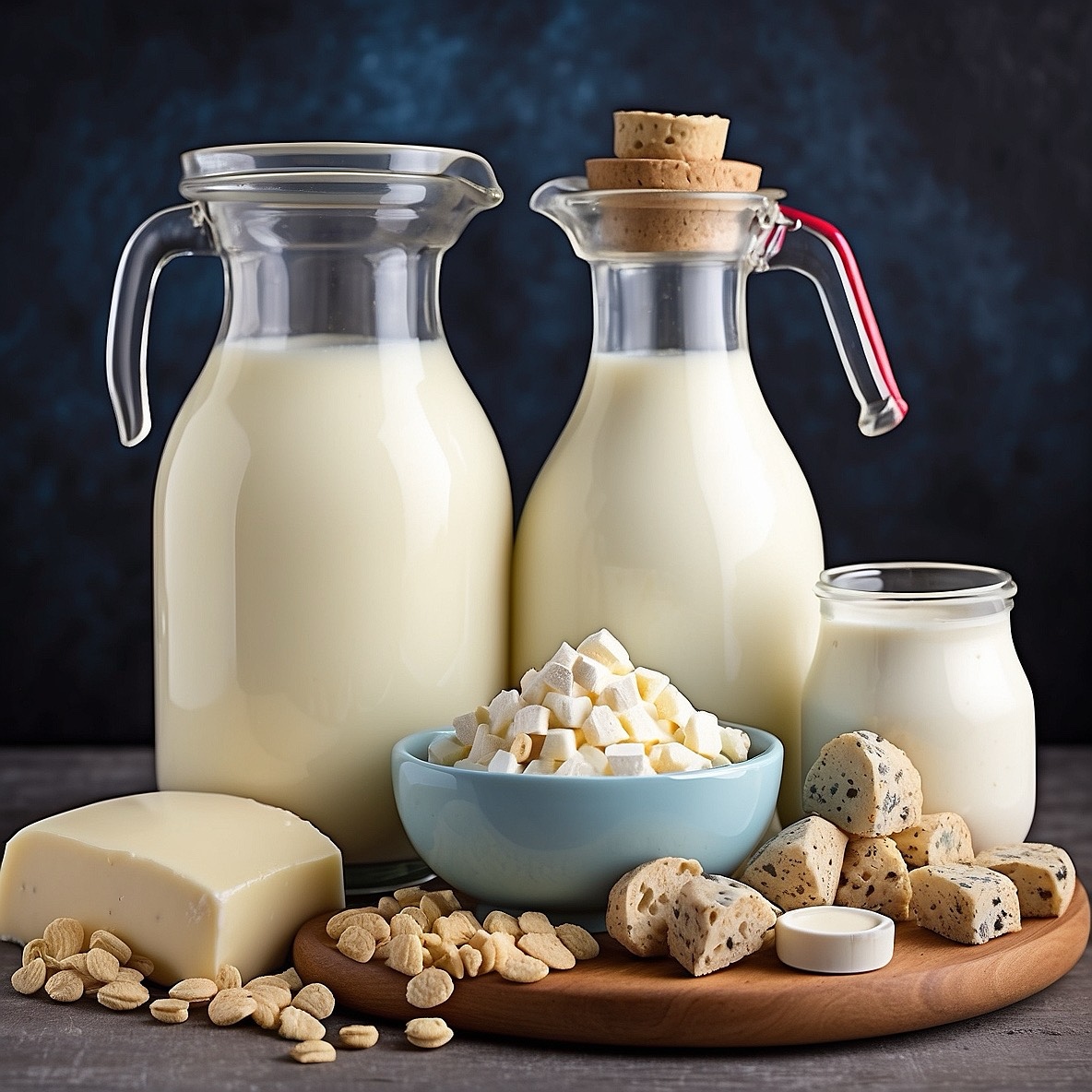 Mind
Mind
- Digital and Modern Well-being
- Mental Health and Emotional Well-being
- Mind-Body Connection and Holistic Health
- Parenting and Family
- Personal Growth and Development
- Relationships and Social Well-being
- Stress and Relaxation
- Therapeutic and Creative Practices
- Trauma and Recovery
- Work, Productivity, and Discipline
 Body
Body
 Fitness
Fitness
 Food
Food
 Beauty
Beauty
Lactose Intolerance and Dairy Alternatives

Lactose Intolerance and Dairy Alternatives: A Comprehensive Guide
Lactose intolerance is a common digestive issue that affects millions of people worldwide. For those who struggle with digesting dairy, navigating a world filled with milk, cheese, yoghurt, and other dairy products can feel limiting. But the rise of lactose-free alternatives and plant-based options has opened up a wide array of choices for those avoiding lactose. In this guide, we’ll explore what lactose intolerance is, its symptoms, and the best dairy alternatives for maintaining a healthy and enjoyable diet.
1. Understanding Lactose Intolerance
What is Lactose Intolerance?
Lactose intolerance occurs when the body cannot properly digest lactose, a sugar found in milk and other dairy products. This happens due to a deficiency of lactase, the enzyme responsible for breaking down lactose in the small intestine. Without enough lactase, lactose remains undigested, leading to a variety of uncomfortable symptoms.
Symptoms of Lactose Intolerance
Symptoms usually appear 30 minutes to two hours after consuming dairy and can include:
- Bloating
- Diarrhoea
- Stomach cramps
- Gas
- Nausea
It’s important to note that lactose intolerance is different from a dairy allergy, which involves an immune response. Lactose intolerance is a digestive issue, whereas a dairy allergy can be life-threatening.
2. Managing Lactose Intolerance
Identifying Your Threshold
Lactose intolerance can vary in severity, with some people able to tolerate small amounts of lactose, while others must avoid it completely. Keeping a food diary and noting how your body reacts to different types and amounts of dairy can help identify your personal tolerance level.
Lactose-Free Dairy Products
Many lactose-free options are available for those who enjoy traditional dairy but need to avoid the lactose. These include:
- Lactose-free milk: Regular cow’s milk that has had lactase added to it, making it easier to digest.
- Lactose-free cheese: Many soft cheeses, like brie or feta, naturally have lower lactose levels, and there are now lactose-free versions of popular cheeses.
- Lactose-free yoghurt: Made with added lactase, this option allows people with lactose intolerance to enjoy yoghurt without digestive issues.
3. Dairy-Free Alternatives
For those who prefer to avoid dairy entirely, plant-based alternatives provide nutritious and delicious options. Here’s a look at some of the most popular dairy alternatives:
a. Plant-Based Milks
Almond Milk
- Nutritional Benefits: Low in calories and fat, and often fortified with calcium and vitamins D and E.
- Taste & Uses: Slightly nutty flavour, perfect for smoothies, cereal, or baking.
Oat Milk
- Nutritional Benefits: Creamy texture with a higher fibre content than most other plant milks, often enriched with vitamins and minerals.
- Taste & Uses: Mild, slightly sweet flavour, ideal for coffee, lattes, and cooking.
Soy Milk
- Nutritional Benefits: High in protein, often fortified with calcium, B12, and vitamin D.
- Taste & Uses: Neutral taste, works well in savoury dishes, sauces, and beverages.
Coconut Milk
- Nutritional Benefits: Contains healthy fats, though lower in protein. It adds a rich texture to dishes.
- Taste & Uses: Distinct coconut flavour, great for curries, soups, and desserts.
Rice Milk
- Nutritional Benefits: Low in fat but higher in carbohydrates, often fortified with vitamins and minerals.
- Taste & Uses: Thin, slightly sweet taste, best for light cereals or drinking straight.
b. Plant-Based Cheeses
Plant-based cheeses have come a long way in recent years, offering texture and flavour similar to dairy-based cheeses. Look for options made from:
- Cashews or Almonds: Rich and creamy, often used for soft cheeses and spreads.
- Coconut Oil or Tapioca: Common in processed plant-based cheeses for melting, like cheddar and mozzarella alternatives.
c. Plant-Based Yoghurt
Yoghurts made from almond, coconut, or soy milk offer a creamy texture without the lactose. Many are enriched with probiotics, which help support digestive health.
4. Nutritional Considerations
When switching to lactose-free or dairy-free alternatives, it’s essential to ensure that your diet remains balanced and nutritionally complete. Here are a few tips:
Calcium and Vitamin D
Dairy is a major source of calcium and vitamin D for many people. When opting for plant-based alternatives, look for products that are fortified with these nutrients to maintain bone health.
Protein
Dairy provides a good amount of protein, especially in milk, yoghurt, and cheese. Ensure you’re replacing it with protein-rich alternatives like soy milk, almond milk, or plant-based yoghurts.
5. Delicious Dairy-Free Recipe Ideas
Here are some creative ways to incorporate dairy alternatives into your meals:
a. Smoothies
Use almond, oat, or coconut milk as a base for a nutrient-packed smoothie. Blend in fruits like berries or bananas, spinach, and a spoonful of chia seeds for added fibre.
b. Creamy Soups
Coconut milk adds a rich texture to soups like pumpkin, carrot, or curry-based broths. Pair with fresh herbs for a burst of flavour.
c. Dairy-Free Cheese Sauces
Blend soaked cashews with nutritional yeast, lemon juice, and spices to create a cheesy sauce perfect for pasta or nachos.
d. Plant-Based Yoghurt Bowls
Top your favourite plant-based yoghurt with granola, fresh fruit, and a drizzle of honey for a quick and healthy breakfast.
6. Conclusion: Embrace the Alternatives
Lactose intolerance doesn’t have to limit your food choices. With the wide variety of lactose-free and dairy-free alternatives available today, you can enjoy a nutritious and satisfying diet without discomfort. By experimenting with plant-based milks, cheeses, and yoghurts, you’ll find plenty of ways to stay healthy while indulging in delicious meals and snacks. Whether for health reasons or personal preference, the world of dairy alternatives offers endless possibilities for flavour and nutrition.
